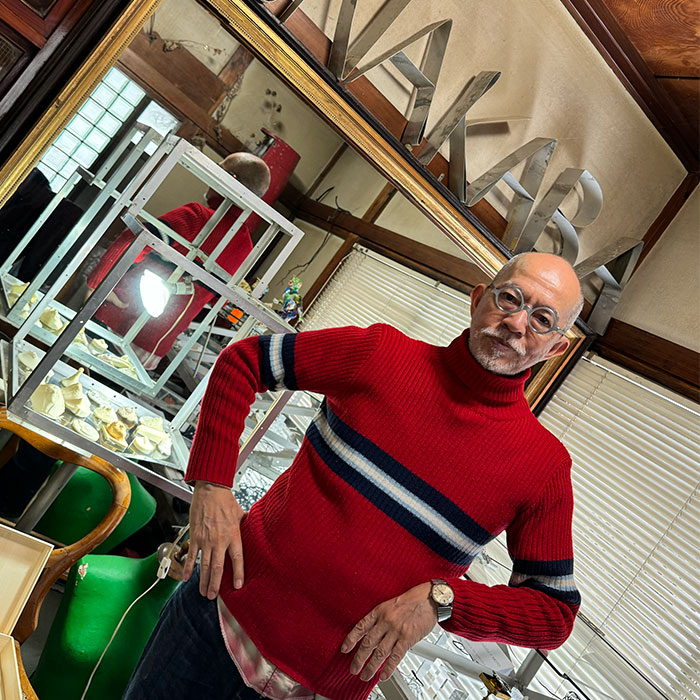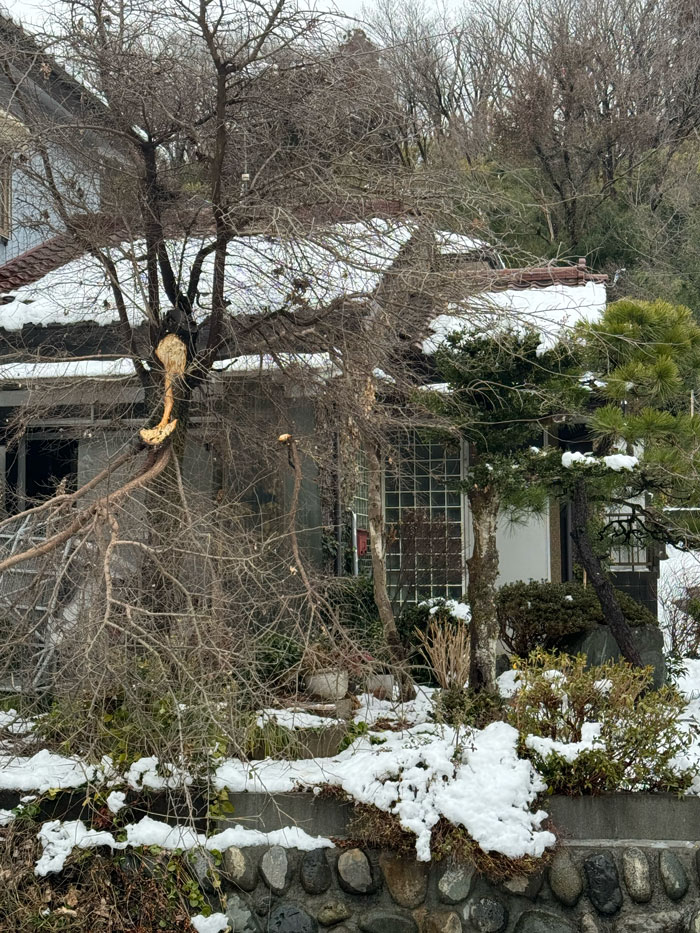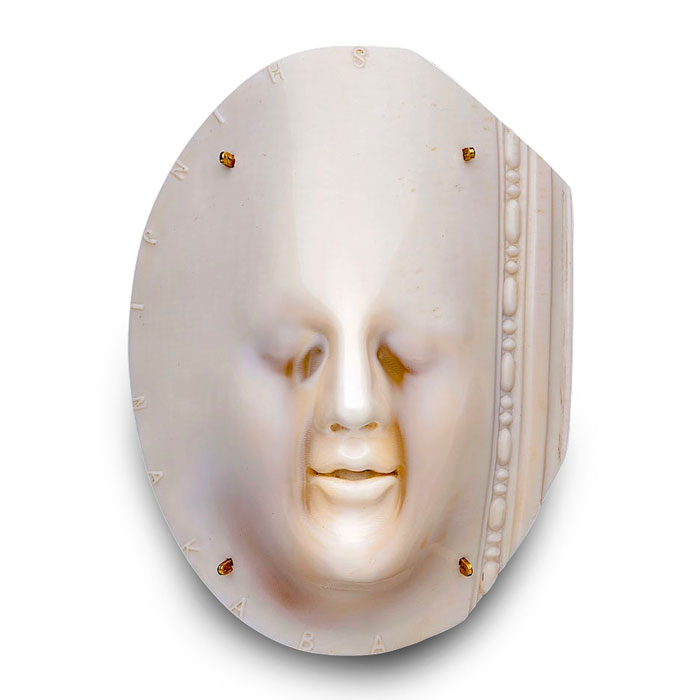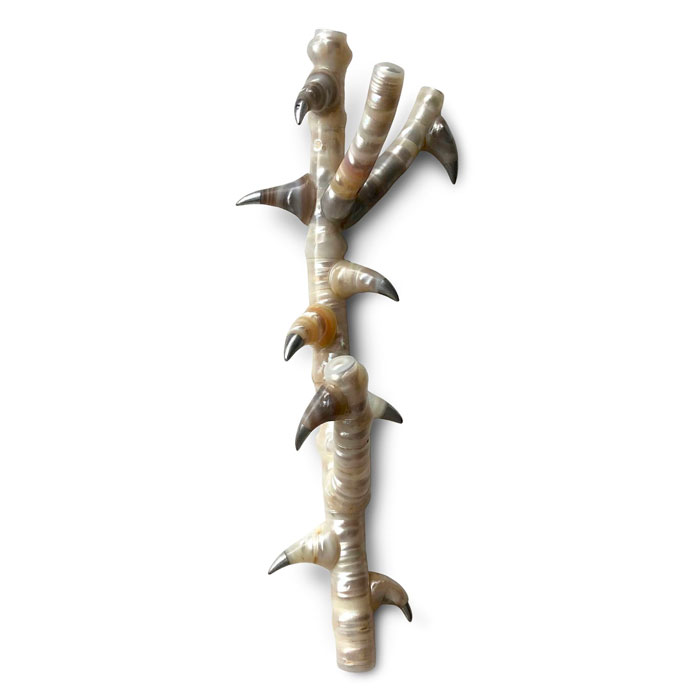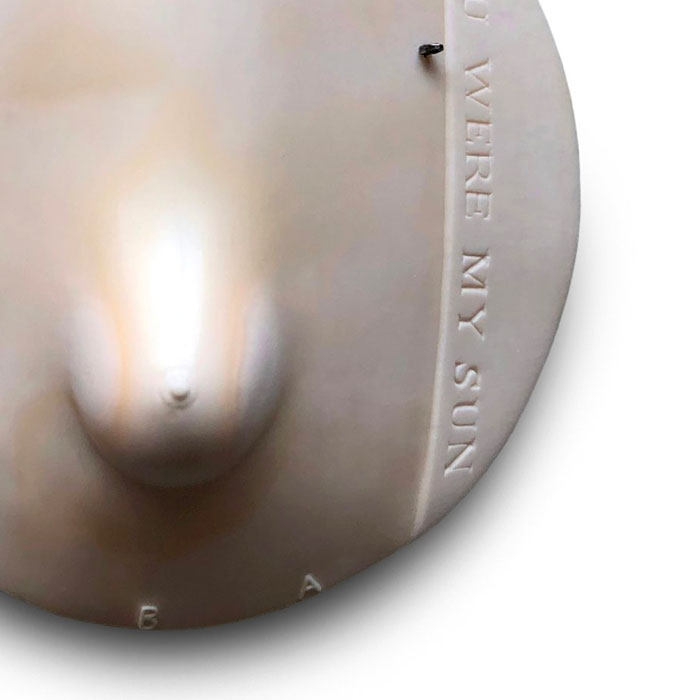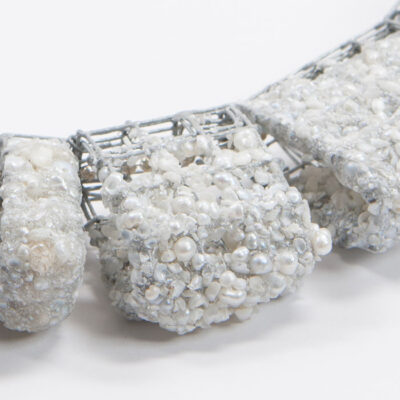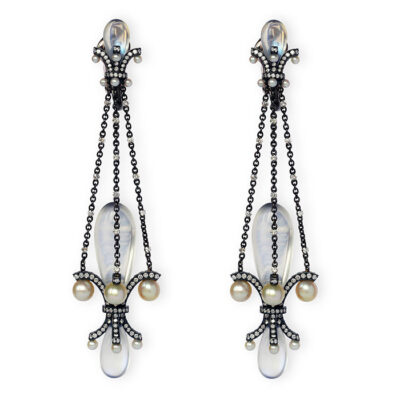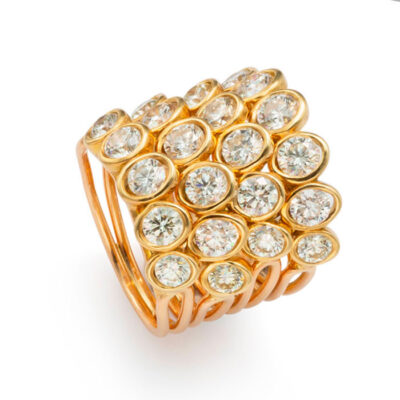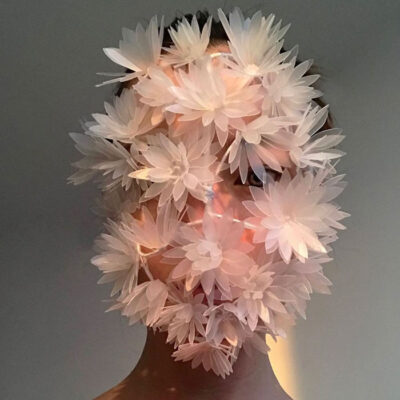Style
22 April 2024
Share
In Japan, in the workshop of Shinji Nakaba
How can we ever claim to really penetrate the Japanese outlook on life? All the same, my meeting with jewelry designer Shinji Nakaba proved to be a rich and fascinating experience.
By Sandrine Merle.
Shinjuku Station, on the way to Hashimoto on the Keio Line Express. I pass through a succession of gray suburbs covered that morning by a thick layer of snow. Tourists never visit this small, ordinary town, light years away from the hustle and bustle of Tokyo, or the poetry of Kyoto or Kanazawa. “The aim was to prove that even outside the major centers, it’s possible to have a wonderful life and concentrate on works worthy of the name,” Shinji Nakaba explains to me later, as he waits for me at the station. Stern-faced and with small round glasses, he sports a bright red striped sweater, scruffy jeans and green Adidas Gazelles on his feet. Nothing as eccentric as his outfit for the inauguration of the Loewe boutique in Omotesando a few months ago.
A recognized player in contemporary jewelry
In 2023, the Loewe Foundation Craft prize brought Shinji Nakaba into the spotlight, but this self-taught jewelry designer had in fact been creating jewelry since 1974, when he was 24 and had already experimented with fashion, studio hairdressing and shoe design. “My youth coincided with a period of euphoria in the country when new movements and lifestyles were developing. It was out of the question to obey the rules and traditions governing society: my friends were slaving away at university, while I was trying to make a living doing what I loved.” Nakaba’s work has long been recognized in the contemporary jewelry world: his sculpted beads in the shape of incredibly lively and expressive faces, skulls and crossbones, but also indelicate genitalia, are sold in such benchmark venues as Galerie Biro (Munich) and Loupe (near NYC). Ilona Schwippel, co-founder of viceversa (Lausanne) confirms the craze for his pieces: “On Instagram, every post generates an avalanche of reactions.” Some pieces, such as the Piece and Chrysanthemum brooches, have entered the collections of the Montreal and Boston Fine Arts Museums, as well as the Espace Solidor in Cagnes-sur-Mer.
In Nakaba’s workshop
Having taken my shoes off, I was able to discover his workshop, which is as fascinating, touching and poetic as his jewelry – a kind of self-portrait that gave me a glimpse into the Japanese designer’s mind… As soon as you enter, the blue workbench catches your eye. It’s the old sewing table on which his mother, a seamstress (who worked with Kansai Yamamoto, among others), made kimonos. “I painted it my favorite color, which has become my color code, to neutralize the smell given off by the wood during the monsoon season”. His mother’s presence also graces one of his tools, which is fitted with the motor of her sewing machine! A figurine was made by his son Moto, in yellow vinyl, representing the god of justice. Yellow and pink waxes announce the release of new cameos. And here’s the calendar sent out at the start of each year by Kazumi Arikawa, president of Albion Art. This great collector, with his unerring eye, confided to me a few days later in his Tokyo office that he was fascinated by Shinji Nakaba‘s glyptic work.
Poetry of raw materials
From his walks in the nearby forest, he brings back dead leaves and branches, which now hang over the door. Some will be partially covered with crushed pearls. Mini pearls to be sawed, filed and carved overflow from boxes and drawers. On the shelves, shells await metamorphosis into dramatic faces or candid sexual organs. In the nooks and crannies, there are sketches, feathers, mysterious substances of every color, aluminum Budweiser cans that he has, in the past, transformed into sublime chrysanthemum brooches, but also toothbrush handles…. He will cut the latter to use the resulting elements as center stones. The extremely fine gold wires will form the knotted frames of his wonderful little faces.
Ilona Schwippel advises us not to over-analyze this work, but rather to let ourselves be carried away by the emotion it exudes. The poetry lies in so many details, contrasts, extravagance and sensitivity… Like all Japanese artists, Shinji Nakaba remains impenetrable. Over an udon prepared by his charming wife Noriko, the cat Helico lying at my feet, he nonetheless shared some personal stories with me. I was particularly touched by this, which turned this encounter into one of the most intense I’ve ever had.
Related articles:
Kazumi Arikawa, cameos and intaglios addict


